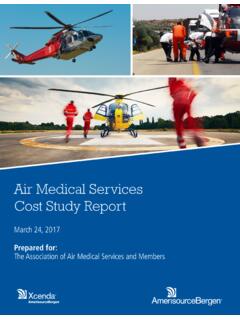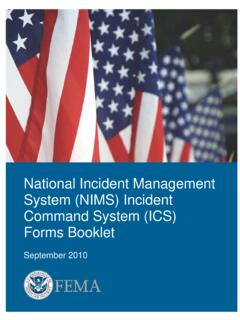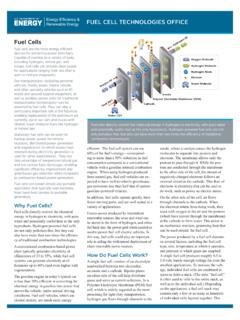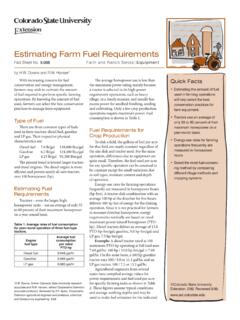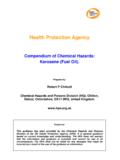Transcription of Aviation Risk Management Workbook - AAMS
1 Aviation Risk Management Workbook US Forest Service DOI Bureau of Land Management Table of Contents Introduction to Aviation Risk Management .. i Risk Management iv Operational Flowchart .. vi Assessments Aerial Supervision Assessment .. 1. Heavy Airtanker 8. Single Engine Airtankers .. 12. Infrared Program .. 21. FHP Aerial Application .. 28. FHP Aerial Photography .. 44. FHP Aerial Detection Survey .. 61. Helicopters .. 82. WCF 103. Blank Risk Assessment Forms .. 117. INTRODUCTION TO Aviation RISK Management . Objective: The objective of a Safety Management system (SMS) is to provide structure to control risk in operations.
2 A formal system of hazard identification and safety risk Management is essential in controlling risk to acceptable levels. system Safety is centered on an organized approach to hazard identification and risk Management with intent to minimize the effect on property, financial, environmental, human and societal losses. Significant attention to good practices in the Aviation industry has evolved over many years. Continuous improvement in accident rates are being experienced internationally. Participants in system Safety continually challenge the processes, the culture, and the systems to identify weaknesses that can be mitigated toward the greater purpose of mishap prevention.
3 Description: The system Safety concept is a comprehensive process to analyze system characteristics and engineer solutions to prevent mishaps from occurring. Aviation Safety Management system (SMS) is an approach to managing safety that includes the necessary organizational structures, accountabilities, policies and procedures. The SMS process identifies hazards and control risks , then provides assurance that risk controls are effective. Although we currently do a good job of identifying hazards and controlling risks , we are not realizing the full benefit that a system wide approach provides.
4 The foundation of SMS consists of four components, they are Policy, Risk Management , Assurance and Safety Promotion. When fully implemented SMS provides and promotes a Positive Safety Culture. The desired positive Safety Culture is informed, flexible, learning, just and a reporting culture that captures the operational knowledge and experience of the employees. The end result of this cultural shift is to achieve the status of a High Reliability Organization (HRO). **. Following your review of the stated Objective and Description of system Safety, you probably have questions on how to best utilize the Guide, as well as how this fits into the big picture.
5 First the big picture; the agencies started looking into system Safety in 2005. The findings were positive and in 2006 the BLM and USFS partnered in their work on Aviation Safety Assessments. The first assessments were completed by Interagency Subject Matter Experts (SME) in March of 2007 and were made available on line in May of 2007. This third revision, completed in March of 2009, is posted online and has been distributed in hard copy as the Aviation Risk Management Workbook . This Workbook helps to establish an Interagency Safety Management system that incorporates all four of the SMS components mentioned earlier.
6 Adoption of SMS also brings the agencies into alignment with the minimum Aviation safety standards agreed to internationally within guidelines of the International Civil Aviation Organization. (ICAO 9859). ** Weick and Sutcliff, Managing the Unexpected i April 2010. What are the four components that will achieve the SMS goal? 1. Safety Policy. We have existing policy in place that supports the foundation of SMS in our Aviation safety programs. This policy is reflected in the Red Book , Interagency Standards for Fire and Fire Aviation Operations.
7 2. Safety Risk Management . This Workbook contains the completed program assessments on Helicopter Operations, Rappel/RADs, External Loads, Aerial Supervision, SEATs, Heavy Airtankers, Infra-Red, EHELL, and Forest Health programs. 3. Safety Assurance. Accident Investigation, Program Reviews, Fire Aviation Safety Teams (FAST), Aviation Safety Technical Assistance Teams (STAT), Aviation Safety Assistance Teams (ASAT), and numerous other tools monitor and report the health of our prevention efforts. Currently we are working towards implementation of an Aviation Lessons Learned web site and work towards a Reporting Culture.
8 4. Safety Promotion. We have the ability to implement very positive change in this area by creating a positive Learning Culture . Communication is the key to success in this component. Training systems are being updated to reflect the principles and procedures being implemented in SMS. Other tools include SAFECOMs, Safety Alerts, Technical Bulletins, Lessons Learned, SAFECOM. trending, safety memoranda, Aviation Safety Committees, tailgate sessions and video clips such as the Six Minutes for Safety series. How should I use this Workbook as a Risk Management tool?
9 Local action plans should incorporate some or all of the best practices that will effectively accomplish hazard mitigation. These assessments can and should be used for briefing tools, tailgate safety sessions, Project Aviation Safety Plans (PASP), and especially during periods of increased fire activity. Area Command, Aviation Safety Assistance Teams (ASAT), Incident Management Teams (IMT), Contractor/Vender employees, as well as all Aviation users can benefit from reviewing and utilizing this valuable information. We encourage Interagency personnel to request pilots to participate in morning briefings and After Action Reviews (AAR) utilizing the applicable mission assessments.
10 Ii April 2010. HOW DO I USE THIS Workbook ON MY LOCAL UNIT? Risk Management Workbook : This Workbook is intended for use in the Management of flight operations. Each section is designed to provide you with information regarding the hazards, risks , and suggested mitigations for most of the agencies Aviation missions. Program Risk Assessments. The tabbed sections contain individual Hazard Logs developed by an SME Team for each mission. These sections depict mission sub-systems, hazards, risk assessments and suggested mitigations associated with each hazard.

